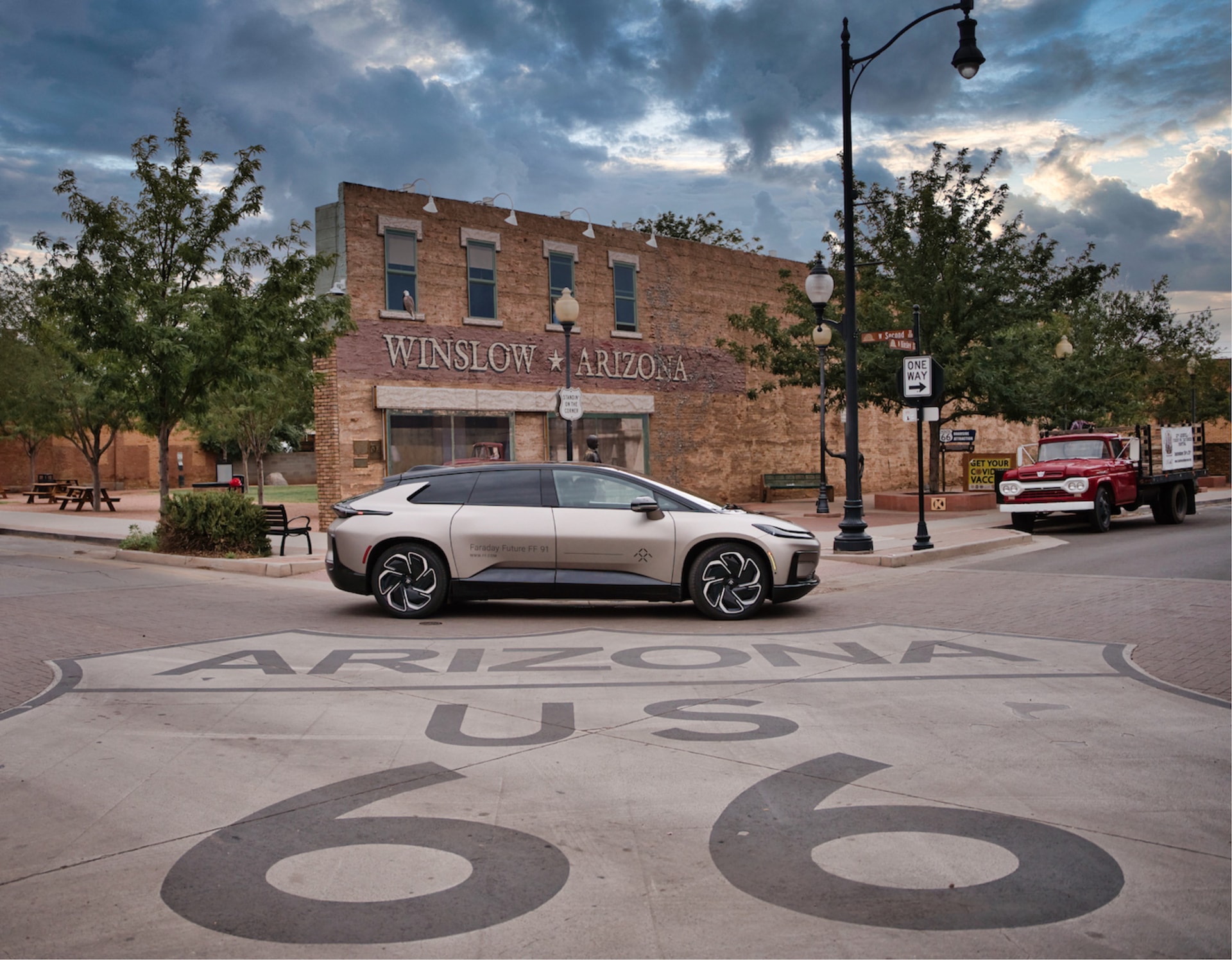Faraday Future (FF) and the Gonzalez Group, shared a video unveiling the fully automated system that will manufacture their flagship EV’s (FF 91) lightweight aluminum closures. The new video highlights Gonzalez Group preparing and testing equipment for future installation at the FF manufacturing plant in Hanford, California. Additionally, it showcases part of the robot health check and dry run activity. This necessary step is part of the programming confirmation as preparation for production of the FF 91 ramps up at the Hanford manufacturing facility.
“This next step in the manufacturing process will ensure we’re prepared for our upcoming pre-production builds,” said Matt Tall, vice president of Manufacturing at FF. “We’re incredibly excited to continue on this path and deliver the ultimate intelligent ‘techluxury’ FF 91 on schedule.”
FF continues to prepare the Hanford site for the installation of manufacturing equipment, and the process is speeding up due to funding received after their recent listing as a public company on NASDAQ. The resources to complete the Hanford manufacturing plant are in-hand, with construction and equipment installation mapped out to meet its production goal. Accordingly, FF’s goal is to be production-ready within a year of the closing of its merger with Property Solutions Acquisition Corp. that occurred in late July 2021.
Faraday Future’s recent listing on NASDAQ (ticker symbol: FFIE) raised the capital intended to finance the release of FF’s flagship vehicle, the FF 91, and pave the way for the FF 81 entry to market. The FF 91 Futurist Alliance Edition and FF 91 Futurist models represent the next generation of intelligent ‘techluxury’ EVs. Specifically, these are described as high-performance EVs and the ultimate robotic vehicles that allow users to experience the ‘third internet living space’.
FF 91 Aluminum Luxury Vehicle
The FF 91 is an all-electric luxury car manufactured with an aluminum body. The EV has an estimated 0-60 mph acceleration in under three seconds and an expected range of 300+ miles. Furthermore, the FF 91 is an intelligent robotic vehicle design, representing the embodiment of FF’s vision to create a shared mobility ecosystem.
The body-in-white of the FF 91 is primarily an aluminum structure, in which several cutting-edge manufacturing technologies are used for joining. This includes a combination of 1,500+ self-piercing rivets, resistant spot welding and cold metal transfer (CMT) welding for job-specific body joining, and Flowform® screw technology, which provides uni-directional joining that is not possible with conventional sheetmetal joining methods.
Moreover, the vehicle also includes Flexweld® resistance element welding (REW) to facilitate aluminum-to-steel welding on “Class A” panels. The body manufacture also implements the earliest use of wireless “transducerized” torque tools for all appropriate safety-critical points, which the company states is a great help in comprehensive error-proofing, total process connectivity/traceability, and precision of assembly.
Longest Road Test in Class
This past August the FF 91 completed a 2,270 mile road test along historic route 66. The jaunt along this highway, which crosses numerous U.S. states, was a long-distance testing milestone signifying a major step towards production.
Real world vehicle testing and evaluation, which followed FF’s public listing on Nasdaq last month in NYC, put the ultimate intelligent techluxury FF 91 through multiple tests in various conditions. For example, it was tested with extreme heat through the desert and on multiple road surfaces including various elevations. The completion of this testing and evaluation of the many vehicle systems, including battery and propulsion components during the 2,270-mile journey further validates FF 91 production timeline.
“This testing journey along historic Route 66 allowed us to put FF 91 through many diverse environments and conditions found only in the central and southwest portions of the U.S. and allowed us to capture real world data on FF 91,” said Dr. Carsten Breitfeld, FF global CEO. “FF’s overall testing and validation strategy will ensure best-in-market performance, safety and user confidence, and to make sure the battery, electric propulsion, chassis, suspension, and other vehicle systems perform under these harsh conditions, while also ensuring a smooth and comfortable and connected experience with the driver and passengers in the FF 91.”
Third Internet Living Space Concept
The long-distance road test that FF conducted is a great opportunity to evaluate the company’s unique ‘third internet living space’ concept in real usage scenarios before it begins production next year. Dr. Breitfeld, an engineer by trade, was an integral part of the Route 66 testing and drove much of the trip, he also used the rear intelligent internet system and in-car video conference system from the rear-seat to participate in daily FF meetings along the way.
FF 91 is equipped with interior cameras and microphones that support videoconferencing features. When the Rear Seat Display (RSD) is turned on, users can access their contacts through conferencing applications to keep connected with friends, family, or business associates while on the road. The applications will run natively on the in-vehicle computer and be mirrored to the users’ mobile devices for remote control.
During vehicle testing, engineers logged volumes of data on the vehicle’s chassis, thermal, electric propulsion performance, and all vehicle systems. They also optimized software controls, performance and calibrations in real world conditions. This critical work is providing some of the final levels of development on FF 91’s systems, as FF advances to the final stages of its program and a timely launch. In the coming months, FF will build additional pre-production FF 91 vehicles for further testing, vehicle development, improvements, with planned readiness for launch in 2022.




